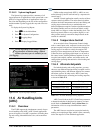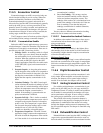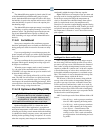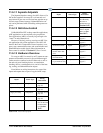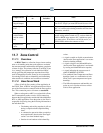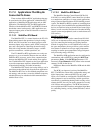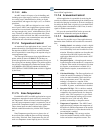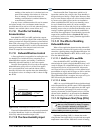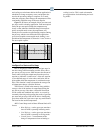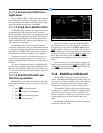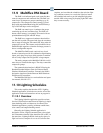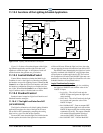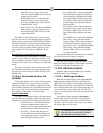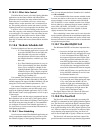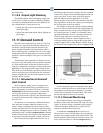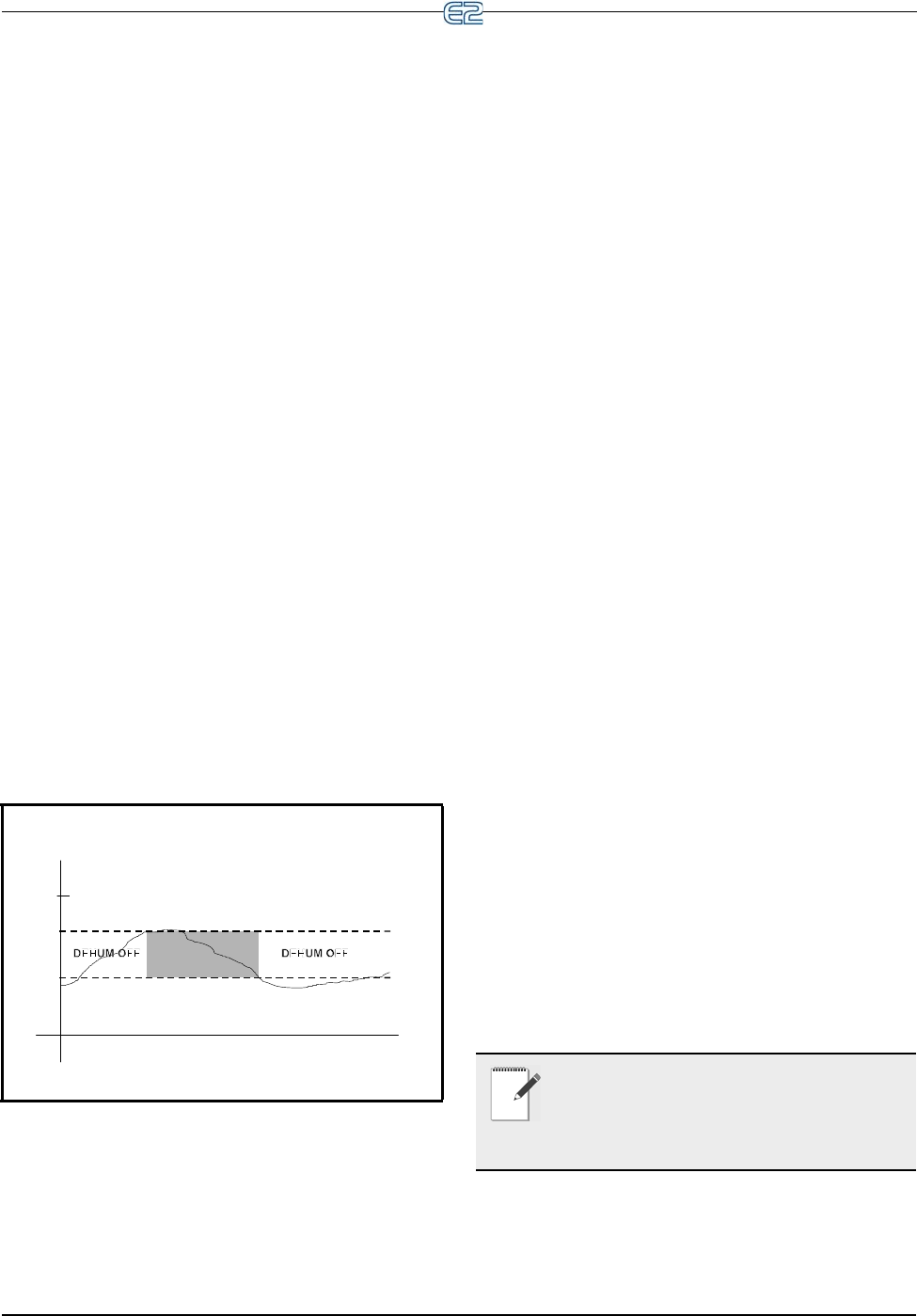
11-28 • E2 RX/BX/CX I&O Manual 026-1614 Rev 4 5-JAN-2013
enthalpy of the outdoor air is calculated and com-
pared to the enthalpy of the ind
oor air. If the out-
door air enthalpy is less than
the indoor air
enthalpy, economization is enabled. Otherwise,
economization is disabled.
You may choose a different method for use in summer
and wi
nter months. Also, an alternate method may be
specified that will be used as a fail-safe when the primary
method is not available (due to sensor failure, etc.).
11.7.8 The Effect of Enabling
Economization
Both MultiFlex RTU and AHU applications support
the use of both two-position (digital) and variable-position
(analog) economizers. Digital economizers, when enabled,
behave like a first stage of cool. When analog economizers
are enabled, the MultiFlex RTU or AHU will modulate the
opening percentage of the dampers based on its own
mixed air temperature measurements.
11.7.9 Dehumidification Control
A Zone application is responsible for reading the rela-
tive humidity level within the Zone, comparing it to a
dehu
midification setpoint, and sending a command to
dehumidify when the humidity is above the setpoint.
Once the Zone humidity level rises above the setpoint,
dehu
midification will be active in all the Zone applica-
tion’s associated HVAC units until the indoor relative
hum
idity falls below the setpoint minus the dehumidifica-
tion hysteresis value. An example of this is shown in Fig-
ure 11-16.
Figure 11-16
- Dehumidification Setpoint Control
DEHUM SET POINT
DEHUM HYSTERESIS
Time (s)
Relative Humidity (%)
100%
0%
26512040
DEHUM ON
The need for dehumidification may also be determined
by a digital humidistat. In this case, dehumidification is
active only when the humidistat input is ON.
11.7.10 The Zone Humidity Input
Note that unlike Zone Temperature, which has 16
inputs that combine into a single value, Zone humidity is
designed to be provided by a single input. However, there
may be some instances where one or more relative humid-
ity sensors exist within a Zone (such as an installation
wh
ere each MultiFlex RTU has its own humidity sensor
for use in Stand-Alone mode). If you have multiple
humidity sensors in a Zone and you wish to combine these
humidity sensor values to calculate Zone Humidity, use an
Analog Combiner application to make the combination,
and tie the Zone application’s Zone Humidity input to the
output of the combiner. Refer to Section 11.18, Anal
og
and Digital Combiners for Analog Combiner application
programming instructions.
11.7.11 The Effect of Enabling
Dehumidification
When a Zone application determines that dehumidifi-
cation is needed, it sends an ON signal to a
ll its associated
controllers, signaling them to begin dehumidification. It is
up to the individual MultiFlex RTU, RCB, or AHU to per-
form the dehumidification.
11.7.11.1 MultiFlex RTUs and RCBs
Once the MultiFlex RTU and RCB applications
acknowledge the signal to begin dehumidification, it will
search its outputs for a dehumidification device. If one is
configured, this device will be turned ON. Afterwards,
cool stages will be cycled ON (up to a user-defined maxi-
mum number of stages) until all stages are ON or until the
Zone appl
ication signals dehumidification is complete.
When dehumidification is complete, the stages will cycle
OFF followed by the dehumidification device.
11.7.11.2 AHUs
AHUs use a special dehumidification algorithm based
on the Proportional loop in PID control. When dehumidifi-
cation is enabled by the Zone application, the AHU appli-
cation will activate a percentag
e of its total cool stage
capacity, the amount of which depends on how close the
current relative humidity is to the setpoint. See Section
11.6, Ai
r Handling Units (AHU), for more information.
11.7.12 Optimum Start/Stop (OSS)
NOTE: OSS applies only to Zone applications
that use a time schedule to change occupancy
stat
es. Overrides initiated by the digital BY-
PASS TO OCC or BYPASS TO UNOCC inputs
will
not initiate pre-starts or pre-stops.
Optimum Start/Stop (OSS) is a feature that works
alo
ngside the Zone application’s occupied and unoccupied
temperature control modes. OSS takes control of heating



